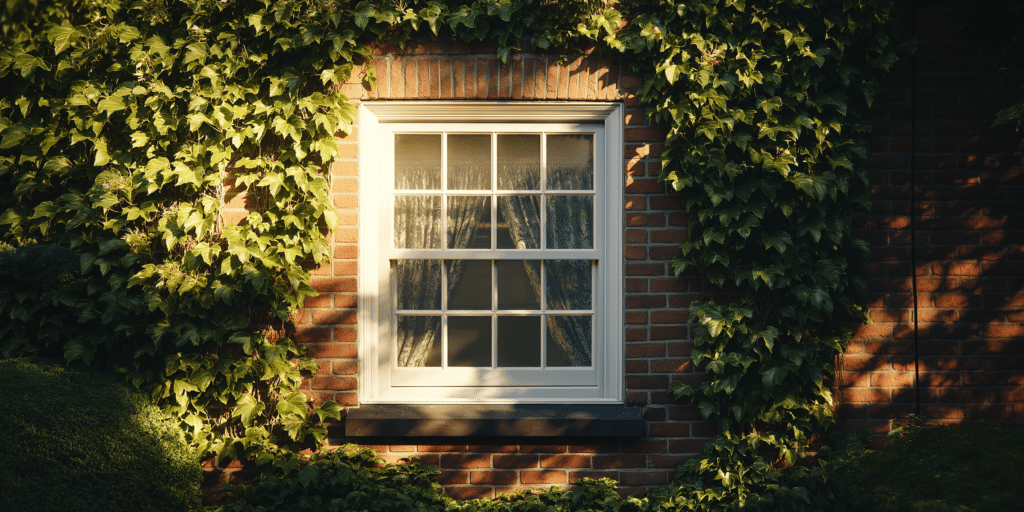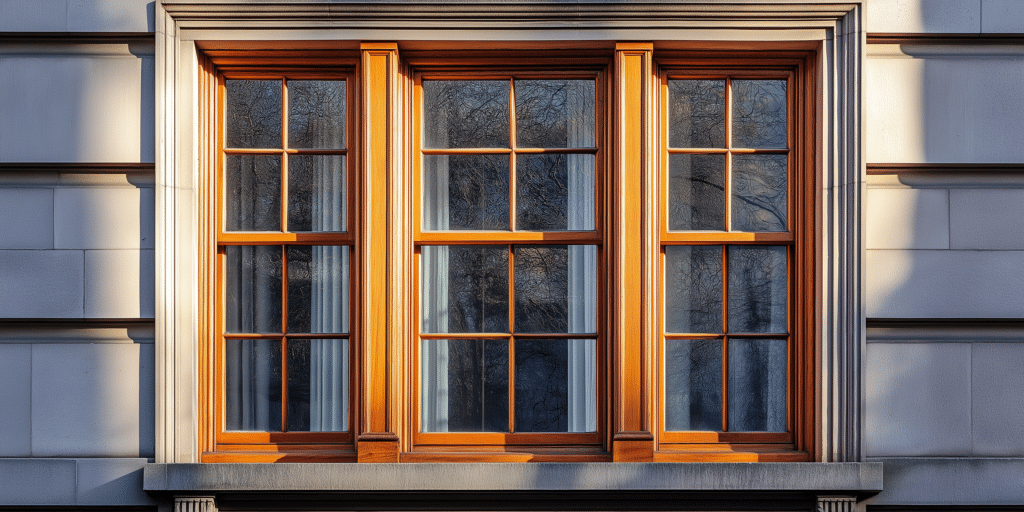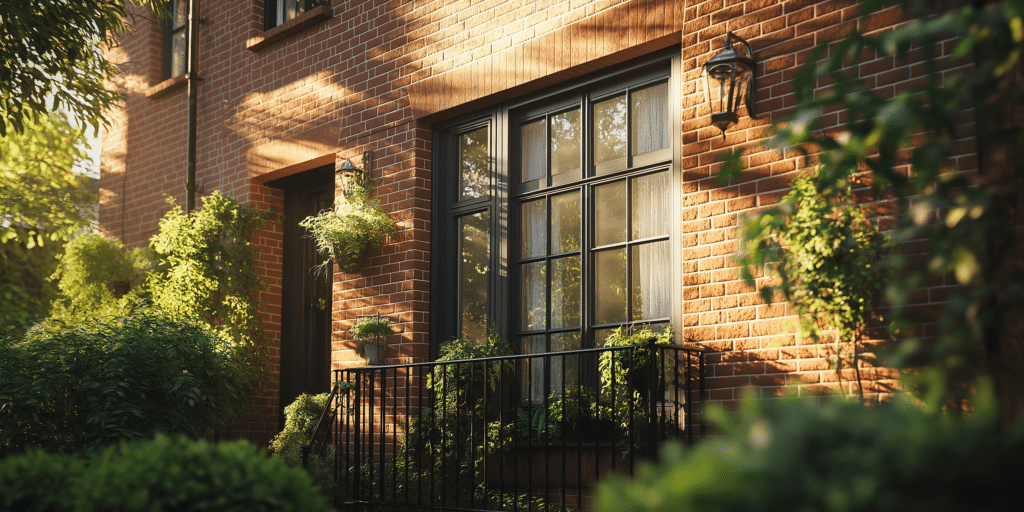Introduction: What Are Sash Windows Operable Panels?

Sash window operable panels are movable sections of a sash window, typically sliding vertically or horizontally. These panels are essential in allowing both ventilation and visual appeal. Many homeowners ask, ‘Do these panels also contribute to a home’s energy efficiency?’ The answer is yes, particularly when engineered for tight seals, preventing draughts and unnecessary heat loss. This is one of the reasons why modern sash windows, when equipped with double glazing and proper weatherproofing, offer excellent thermal insulation.
The operable panels come in different configurations, such as single-hung and double-hung sash windows. Single-hung windows have one movable sash, while double-hung designs allow both upper and lower sashes to move independently. Tilt-turn panels are especially versatile for those seeking enhanced functionality. Double-hung sash windows are popular in homes because they allow for both top-down and bottom-up ventilation.
The operable panels play a pivotal role in improving ventilation. For example, in a double-hung sash window, you can create a cross-breeze by adjusting both the top and bottom sashes, promoting natural airflow throughout the home. Proper ventilation helps to control moisture levels and circulates fresh air.
Operable panels aren’t just a stylistic choice. They improve energy efficiency while preserving the traditional aesthetics of period properties. By maintaining the integrity of Georgian, Edwardian, or Victorian sash windows, operable panels allow homeowners to marry the best of historical architecture with modern performance. Experts in the field suggest that bespoke joinery enhances the performance of sash windows, particularly the operable panels, leading to smoother operation and longer lifespan.
Key Benefits of Sash Windows with Operable Panels
- Energy Efficiency: One of the primary benefits of operable panels is energy efficiency. Operable sash windows can reduce heat loss significantly when fitted with double glazing or low-E glass. The addition of argon gas between the panes enhances insulation further. According to several studies, homes with these modern features in their sash windows achieve U-values of as low as 1.6 W/m²K, in contrast to older single-glazed windows, which exceed 5.0 W/m²K. This difference dramatically impacts energy bills.
- Aesthetics: Some homeowners fear that operable panels might clash with the look of their period homes. However, with advances in window design, wooden frames or uPVC alternatives replicate traditional sash styles while maintaining modern functionality. Manufacturers offer options that mimic historical woodwork, combining the best of both worlds.
- Security: Security is often a concern for homeowners installing operable panels. Today’s sash windows come equipped with robust multi-point locks, reinforced glazing bars, and tamper-resistant sash locks, ensuring maximum security. Using toughened or laminated glass can provide additional security, especially in areas prone to break-ins.
- Customisation: From timber and aluminium materials to finishes, hardware choices, and grille patterns, sash windows can be tailored to suit different architectural styles. Modern finishes offer both aesthetic value and functional improvements, such as additional weatherproofing.
Types of Operable Panels in Sash Windows
- Single-Hung Sash Windows: Only the bottom sash is operable in this design. Single-hung windows work well in tight spaces but may offer less airflow compared to double-hung options.
- Double-Hung Sash Windows: These windows allow both the top and bottom sashes to move. The key benefit is improved airflow, as cool air enters through the bottom and warm air exits through the top, which is ideal for regulating indoor temperatures.
- Tilt-Turn Panels: These windows offer dual operability, tilting for ventilation or turning fully for access. They are great for easy cleaning and emergency egress. In many cases, yes, because the additional control over airflow helps regulate room temperatures more effectively.
- Horizontal Sliding Sash Windows: Perfect for wide openings or when vertical space is limited. If properly sealed, horizontal sash windows are just as effective as their vertical counterparts at preventing draughts and improving insulation.
Materials for Sash Window Operable Panels

- Wooden Operable Panels: Wood is the traditional material for sash windows. Treated modern hardwoods, when maintained properly, can last for decades.
- Aluminium Operable Panels: Aluminium is more resistant to weathering and requires less upkeep than wood, making it ideal for areas with harsh weather conditions.
- uPVC Panels: It offers excellent insulation properties, minimal maintenance, and is resistant to rot and warping, making it a long-term, cost-effective solution.
- Composite Panels: Combining timber and aluminium, composite windows offer superior insulation and durability. Its longevity and energy-saving potential often justify the initial investment.
Installation Process for Operable Panels
- Preparation: Proper preparation is essential. Accurate measurements and ensuring a sound frame are key steps in successful installation. Retrofitting modern operable panels can require careful adjustments to the balance mechanisms.
- Frame Installation: Frames are fastened using steel brackets and screws, with reinforced weatherproofing to prevent draughts. Many experts recommend adding extra insulation around the frame during installation to improve energy efficiency.
- Balancing Mechanism: The operable panels are balanced with a system of weights or springs. The correct calibration of these systems is essential for ease of use and durability. If not properly balanced, the windows may become difficult to operate over time.
- Final Adjustments and Testing: After installation, how can homeowners ensure their windows are functioning properly? A final test should include checking that the panels open and close smoothly and that there are no draughts. Testing the window’s U-value is also recommended to ensure it meets energy efficiency standards.
Maintenance Tips for Sash Windows with Operable Panels
- Regular Cleaning: Regular cleaning every few months, especially around the window tracks and frames, ensures the smooth operation of the panels. Accumulated dust, debris, or dirt in the tracks can cause operational problems and even lead to damage. Many experts recommend cleaning both the interior and exterior of sash windows with a non-abrasive cleaner to prevent scratching and wear on the glass and frames.
- Lubrication: Silicone-based lubricants are preferred for lubricating the pulley systems and other moving parts of sash windows, as they do not attract dirt. Periodic lubrication prevents wear on the operational mechanisms, especially the pulleys and hinges. Regular lubrication helps to keep the windows functional and smooth over the years.
- Weatherstripping Replacement: The weatherstripping around the sash window panels is crucial for preventing draughts and maintaining energy efficiency. Experts recommend inspecting and replacing weatherstripping every 2-3 years or sooner if signs of wear and tear, such as cracking or fraying, are evident.
- Professional Servicing: If homeowners notice difficulty operating the windows, draughts, or panel misalignment, professional servicing may be needed. Technicians can recalibrate the balance system or replace worn components to restore the panels’ smooth operation and ensure continued performance.
Energy Efficiency: Improving Thermal Performance with Operable Panels

- Low-E Glass: Low-emissivity (Low-E) glass has a special coating that reflects heat back into the room in winter and prevents heat from entering during the summer. This feature helps homeowners maintain a more consistent indoor temperature, reducing reliance on heating and cooling systems. Research shows that adding Low-E glass to sash windows can improve the window’s U-value by up to 30%.
- Double Glazing: This provides an insulating layer of air or gas between two panes of glass, greatly reducing heat transfer. Argon-filled double glazing, for example, can lower the U-value of a sash window to around 1.6 W/m²K, making it one of the most energy-efficient options for homes.
- Argon Gas Filling: Argon is an inert gas that is denser than air, which increases the insulation value between the panes of glass. This gas helps to minimise thermal transfer, making windows more energy-efficient. When paired with Low-E glass, argon-filled windows offer maximum thermal efficiency.
- Thermal Breaks: Found primarily in aluminium sash window frames, thermal breaks are barriers within the frame that stop the transfer of heat. This prevents the exterior cold or heat from passing through the metal frame, making aluminium windows just as thermally efficient as their wooden or uPVC counterparts.
Sash Window Operable Panels and Historical Properties
- Retrofitting Operable Panels: Modern panels can be retrofitted into older sash window frames, maintaining the period aesthetic while improving functionality and thermal performance. Historic England advises that retrofitting modern operable panels with features like double glazing can significantly enhance energy efficiency while preserving the look of heritage windows.
- Conservation Area Compliance: Regulations in conservation areas often require homeowners to use specific materials, such as timber or heritage glass, to match the existing architecture. It is essential to check with local planning authorities to ensure compliance with conservation regulations.
- Replica Windows: Manufacturers offer bespoke solutions that replicate the style of traditional sash windows while incorporating modern technologies like double glazing and multi-point locks.
- Heritage Glass: Heritage glass mimics the appearance of traditional hand-blown glass, complete with minor imperfections and waviness while integrating modern energy-saving features. This glass is ideal for homeowners in conservation areas or those seeking to maintain the period look of their property.
Customising Operable Panels for Different Architectural Styles
- Georgian and Victorian Styles: Modern timber sash windows are designed to mirror the slim profiles and traditional grid patterns typical of Georgian and Victorian architecture while incorporating operable panels for improved functionality.
- Edwardian Homes: Edwardian homes often feature large sash windows with fewer glazing bars, allowing for more natural light. Installing operable panels in these homes enhances ventilation and preserves their historical charm.
- Contemporary Styles: Contemporary homes can adopt modern operable sash windows, particularly with aluminium-clad or composite materials that combine durability with sleek, minimalistic designs. These materials are ideal for homeowners seeking a blend of traditional sash window appearance and modern performance.
- Period Property Compliance: It is important to ensure that the materials used, such as heritage timber or conservation-compliant uPVC, meet planning and regulatory standards. Using the right materials can improve energy efficiency without compromising the property’s historical value.
Final Thoughts: Maximising the Benefits of Sash Windows with Operable Panels

For optimal thermal performance, it’s essential to maintain the weatherstripping and replace it when it starts to degrade. Furthermore, investing in double glazing and thermal breaks can make a substantial difference in insulation. Statistics from the BFRC show that well-maintained double-glazed sash windows can reduce household energy consumption by up to 20% annually.
Homeowners can retain the charm of period properties by choosing custom timber frames or wood-effect uPVC that replicate the historical appearance of Victorian or Georgian windows. According to a 2022 study, 80% of homeowners in conservation areas chose timber-framed operable panels for aesthetic preservation while benefiting from modern functionality.
Regular maintenance, including applying protective coatings and lubricating moving parts, will help extend the life of the panels. It’s also advisable to check and recalibrate the balance mechanisms every few years to ensure smooth operation.
Professional installation ensures proper alignment, balance, and sealing of the panels, which are essential for energy efficiency and long-term durability. Homeowners should seek out professionals certified in sash window installation, as these experts understand the intricacies of balancing period design with modern technology.




